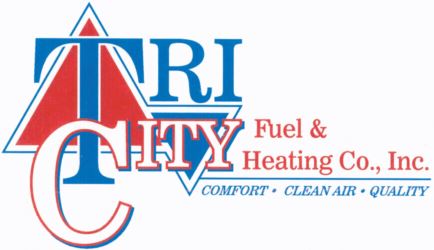
Your entire home should be a refuge that’s warm and comfy in the winter season and cool and comfortable in the summer. However, owners of some multi-level residences find the upper floor is stubbornly hotter or colder than the main floor.
This could merely be caused by the fact that most thermostats in a house are on the main floor, which is where people spend the most time—in the living room, kitchen, etc.—so they set the temperature according to how it feels on the first floor.
However, temperature variations between the upstairs and downstairs could also be due to trouble with your HVAC system. Some of these difficulties can be resolved fairly quickly while others might call for more extensive and costly fixes. Here, the team at Tri City Fuel & Heating will help you figure out why the upstairs of your home is hotter than downstairs, or vice versa.
Why Is It Hot Upstairs?
The phenomenon of the upstairs of a two-story home becoming hotter than the downstairs can be attributed to several factors. First, heat rises, so it’s normal for the second floor of a home to get hotter than the main floor. Insufficient insulation in the attic or roof can make this worse by permitting heat transfer from the roof into the upstairs rooms.
Another common reason is that the air conditioning is not strong enough to cool the entire home, causing it to fight to cool the upstairs adequately.
To fix these issues, homeowners could add more insulation in the attic and make sure their home has sufficient ventilation. If there’s a question of whether the air conditioner is the correct size for the home, call an experienced HVAC company like Tri City Fuel & Heating inspect the unit. A qualified professional also can help locate a unit that's better suited for your home if you want air conditioning installation or replacement.
Why Is My Upstairs Always Cold/Not Heating?
When the downstairs of your home is warm, but it’s very cold upstairs, that makes for an ice-cold night for anyone whose bedrooms are on the upper floor. The most common reasons an upstairs not heating like it ought to are the insulation levels and the ductwork.
Inadequate insulation enables cold air to seep through the home’s attic or walls and contribute to heat loss, creating colder temperatures upstairs. It’s crucial to make sure your home has a solid, level layer of insulation in the attic and appropriate insulation in the walls to keep the cold out and the heat inside.
The ductwork in a home plays a fundamental role in circulating conditioned air throughout different rooms of the building. However, troubles with the ductwork can contribute to the upstairs being colder than the lower floor. A frequently reported explanation for this is improper airflow balance. The ducts may not be the correct size or configuration, which results in an uneven distribution of air between the floors. This can cause more warm air to be directed to the downstairs, leaving insufficient airflow—which is the heated air—on the upper level.
Another potential problem area in the ductwork is the placement of the supply and return vents. If there are fewer vents on the upper floor or they aren't well located, it can reduce air circulation and cause inadequate heating or cooling. Additionally, leaks or gaps in the ductwork can cause air loss, decreasing the overall efficiency of the HVAC system and exacerbating the temperature difference.
To figure out why the upstairs is colder than the downstairs, homeowners should hve their ductwork checked by trusted experts like the team at Tri City Fuel & Heating to identify any imbalances, leaks or inadequacies. Sealing leaks and adding additional vents or adjusting existing ones can help increase airflow and ensure a more consistent temperature balance between the upstairs and downstairs.
Fixing the Hot or Cold Upstairs Problem?
If your upstairs is hotter or colder than the rest of your house, an HVAC zoning system could be an effective solution.
An HVAC zoning system breaks the household into distinctive zones, which each have their own thermostat and damper system so the homeowner can customize the heating or cooling of each zone.
This system can be particularly beneficial in instances where the upstairs of a multi-story home is too hot or too cold while the main floor is comfortable. By installing a zoning system, homeowners can manage the temperature independently in each zone, allowing them to address specific hot or cold spots easily.
To discover more about an HVAC zoning system in West Columbia, call Tri City Fuel & Heating. We’ve developed and installed customized home comfort plans for many community members and are happy to show how an HVAC zoning system could enhance the comfort in your home.
Why Is it So Humid Upstairs?
In addition to the upper story being hotter or colder than the rest of the house, another problem in multi-floor homes is when the upper floors are more humid than the first floor.
A frequent explanation for excess upper floor humidity is inadequate ventilation on the upper floor, which can cause greater humidity levels. As is often the case with temperature differences between floors, inadequate insulation or sealing in the attic or walls may let warm, humid air from outdoors infiltrate the upstairs rooms. And, if there are any leaks or plumbing problems on the upper floor, that can also cause excessive moisture in that level of a home.
To address humidity problems, homeowners can increase ventilation by installing fans or opening windows to promote airflow. Adding more insulation in the attic and better sealing the attic and walls can help prevent external moisture from entering the upstairs. Finding and repairing any leaks or plumbing issues is also extremely important.
Depending on the levels of moisture found in the home, a whole-home dehumidifier could be another valuable tool to manage humidity in the residence.


